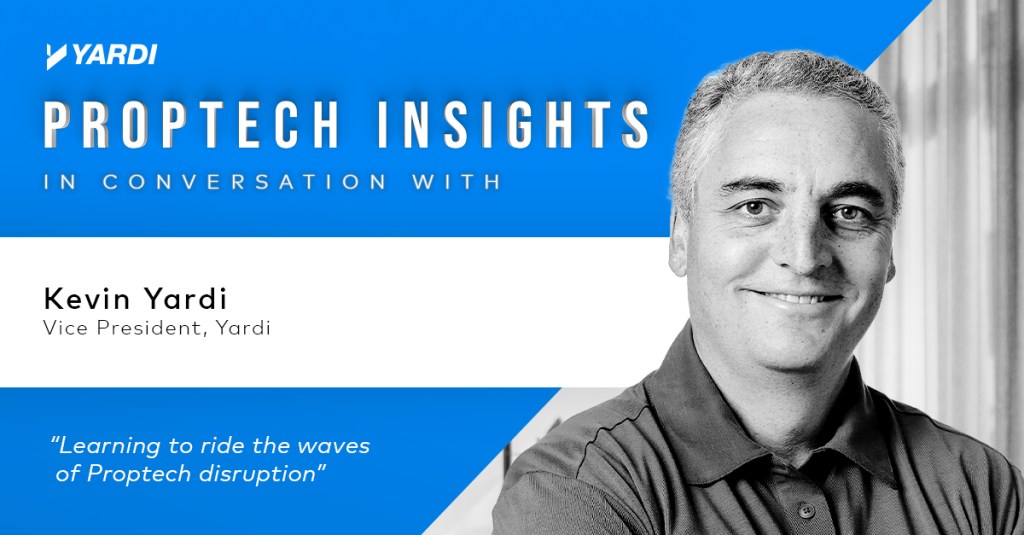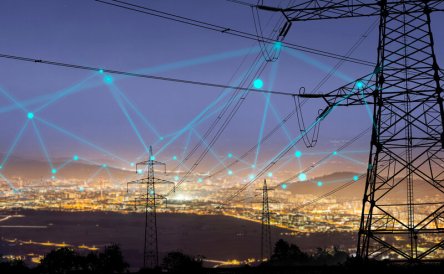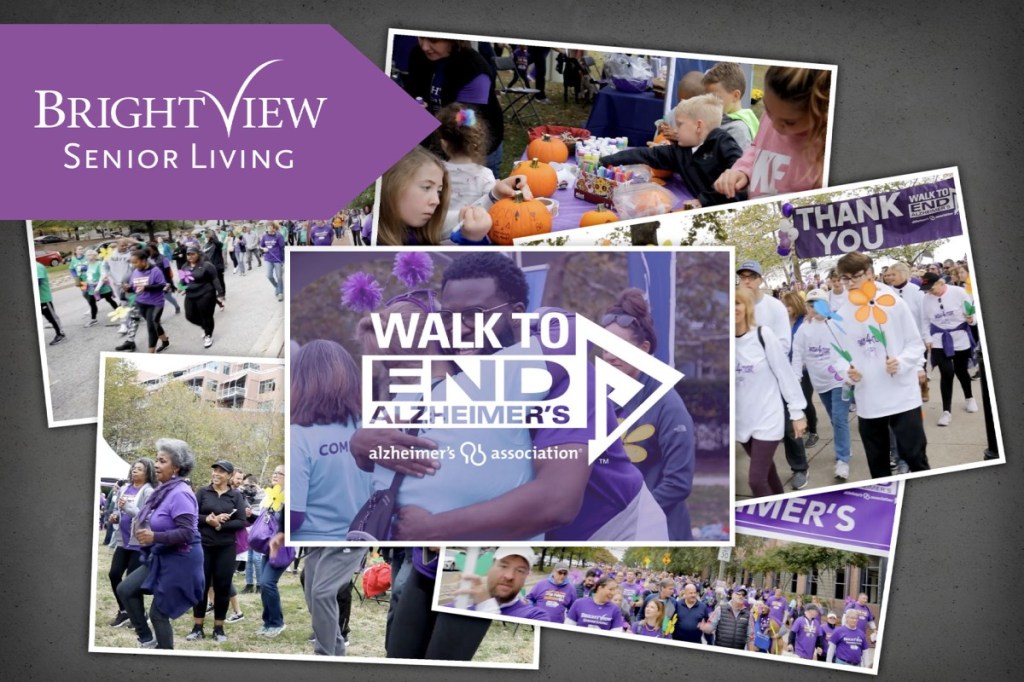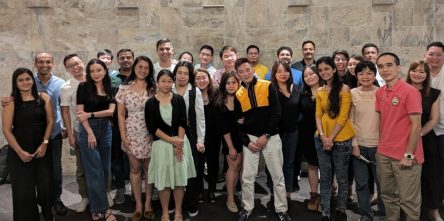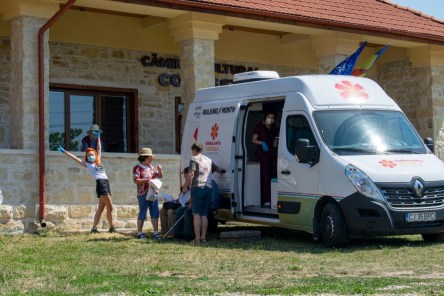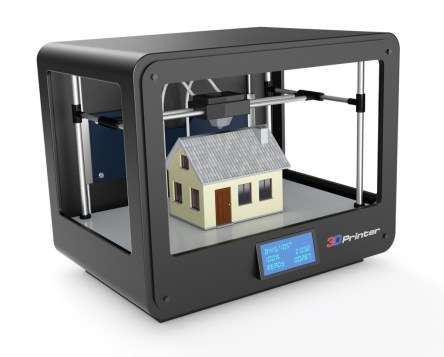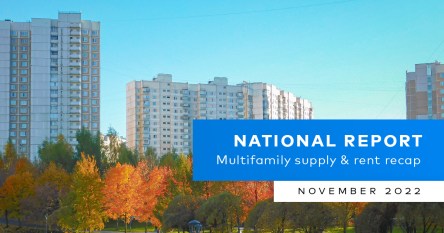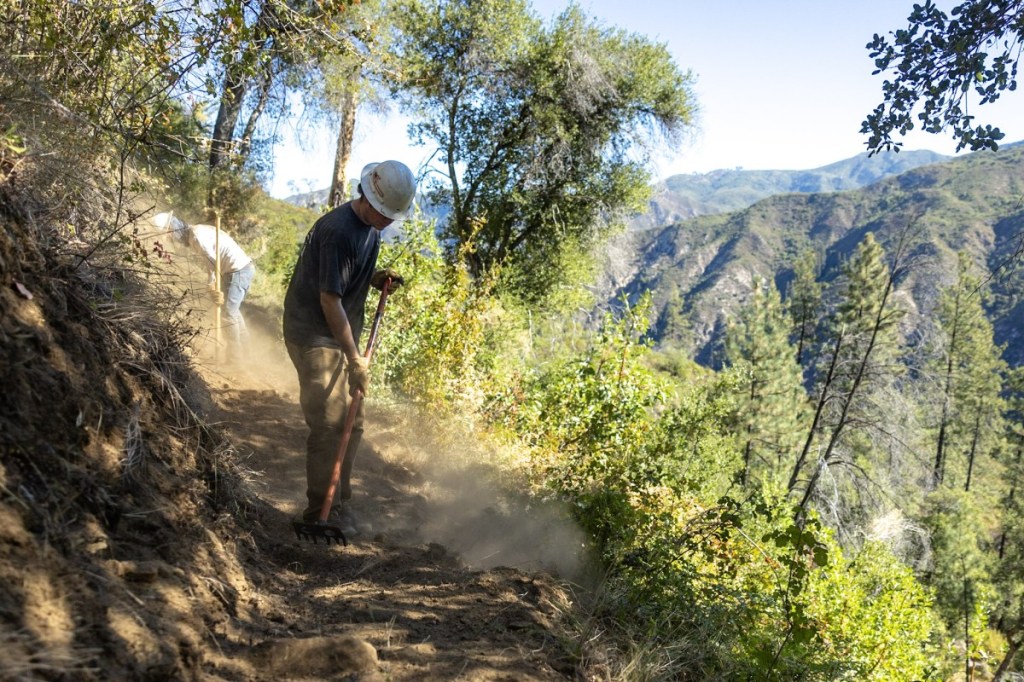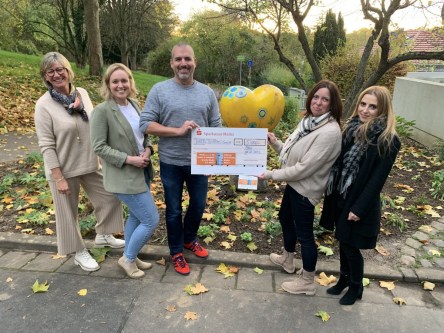Contraction in the proptech universe won’t be driven just by competition, consolidation or economic challenges, but also by compliance. That’s the top takeaway from a recent webinar hosted by Yardi’s Asia Pacific team. Bernie Devine, Yardi’s Senior Regional Director for Asia Pacific, sat down with Kevin Yardi, Vice President of Yardi, for the final installment of Proptech Insights for 2022. Kevin Yardi interfaces with some of the world’s largest real estate companies and has observed a shift in the proptech conversation as 2023 begins. The latest Metaprop Global PropTech Confidence Index, which has been a barometer of health for the burgeoning proptech industry since 2016, recorded its lowest investor confidence score to date. Confidence plummeted to 5.8 out of 10, down from its all time high of 9.3 just six months prior. While a “handful” of proptech companies are receiving “big cheques” a “long, long tail” is the recipient of far smaller investments, Kevin noted. Expect that long tail get much shorter, Kevin predicted, as the screws of regulation tighten over the next two or three years. Regulation is expected to ramp up across the Asia Pacific. Following a series of high-profile data breaches, the Australian Government is considering tougher financial penalties with fines up to AU$50 million. Japan’s laws governing the protection of data has been strengthened to match the gold standard of data protection regulation, the European Union’s GDPR. And China’s new data privacy legislation influences more than a billion internet users. Bernie suggested these moves signal a future model where consumers “containerise” their personal data and make it available on a “permission-only basis”. Real estate companies will be required to rethink every element of their business process, he warned. Kevin agreed. “You have to understand what data you have, why you are holding it, and how long you are holding it for. Those seem like straightforward questions. But if the data is sitting in all sorts of systems for reasons unknown it can be a challenging thing to start digging through.” Compliance is a “large, growing and challenging topic” for every company in the proptech ecosystem, but especially those operating at a small scale, Kevin added. “It is challenging for a small company to have the apparatus, the technical security teams, the folks who understand compliance and GDPR.” Real estate customers are reassessing their appetite to absorb the risk. Overlay that with the “operational technology data” collected by everything from “light switches and heat sensors” and “it gets pretty complex because your level of security needs to be much higher,” Bernie added. Yardi has been looking after client data for more than 22 years. Supporting more than two billion square meters of assets and US$6 trillion of assets under management, Yardi has a global footprint and products used in 80 countries. Even with a dedicated global compliance team to mitigate risk and enhance confidence, it’s “not always straight forward,” said Kevin. “Some regulatory bodies may be in conflict with each other. It takes vigilance and ongoing coordination.” So, what can we expect in 2023? The pair expect further aggregation to force companies to streamline their business operations and elevate their compliance processes. “Manual processes and Excel are really hard to scale and tend to be more and more error prone as a portfolio goes from 10 properties to 100 to 1,000 to 5,000,” Kevin concluded. Check out the previous episodes of Yardi’s Proptech Insights webinar...
EIA Updates
Building Efficiency & More
This is the latest of our periodic updates on the U.S. Energy Information Administration (EIA), the U.S. Department of Energy’s statistical and analytical agency. EIA collects, analyzes, and disseminates energy information for the benefit of energy policymakers, analysts and consumers. Winter costs on the rise The EIA expects higher wholesale electricity prices this winter in every region of the country, with increases ranging from 33% higher in California to more than 60% in the mid-Atlantic and Central regions. Electricity price could peak more than three times higher in New England than elsewhere in the U.S., due to limited pipeline capacity for liquefied natural gas coupled with stronger global demand for LNG. In one encouraging sign for consumers, the EIA does not “expect retail electricity prices to increase as much wholesale prices this winter,” said Administrator Joe DeCarolis. Batteries on growth curve through ‘25 Developers and power plant owners plan to significantly increase utility-scale battery storage capacity in the U.S., reaching 30 gigawatts by the end of 2025. Batteries store extra energy produced by intermittent resources such as wind and solar. Battery storage capacity in the U.S., negligible prior to 2020, grew to 7.8 GW by October 2022, with 1.4 GW more capacity expected by the end of the year and an additional 20.8 GW through 2025, more than 75% of which will be in California and Texas. Developers have scheduled more than 20 large-scale battery projects to be deployed by 2025. The 409 megawatt Manatee Energy Storage in Florida is currently the U.S.’s largest operating battery storage project. Uptick in commercial building efficiency A recently released U.S. commercial buildings energy consumption survey report shows that the average total amount of energy used per square foot in commercial buildings decreased by 12% from 2012 to...
New SL Ebook!
Superior Success With CRM
Curious how the right technology can help you optimize staff efficiency, maximize occupancy and boost revenue? In our new ebook, in partnership with McKnight’s Senior Living, you’ll discover how CRM tools thoughtfully designed for senior living drive success. Read the highlight below then read the ebook for all the insights, including a closer look at RentCafe Senior CRM (our single connected solution). How to choose the right CRM technology Given the life-changing nature of moving into a senior living community, it’s important for sales counselors to connect with prospective residents in a thoughtful, strategic manner. And in today’s day and age, CRM technology is available to aid that process throughout the prospect to resident journey. The right CRM helps sales staff track and nurture leads, build positive relationships and so much more, but not all solutions are built the same. For providers, a CRM solution needs to be designed for the unique needs of senior living in order to maximize success. That’s a key focus of the ebook, which shares the benefits of senior living CRM tools and offers guidance on selecting the solution for you. “A good CRM should do the work for you and allow you to focus on what’s most important: building relationships,” says ebook interviewee Candace Seidle, senior living team leader at Yardi. Discovering RentCafe Senior CRM In an effort to illustrate how the right CRM solution builds success, the ebook spotlights our single connected solution, RentCafe Senior CRM. This all-in-one platform is part of the Yardi Senior Living Suite for senior living providers. Not only does RentCafe Senior CRM help you nurture leads from first contact to move-in, it’s also configurable, mobile-friendly and fully integrated with key elements of your business. The ebook covers top benefits and reasons...
Success With Yardi
Senior Living Case Study
When exploring a software solution, you may wish to see testimonials from that vendor’s clients — those who can speak to benefits and results based on their own experience. At Yardi, we strive to capture these testimonials in various ways. Meeting with our clients to chat through their journey — and see how our solutions are helping them succeed — is our favorite thing. And a recent interview with one of our fantastic senior living clients is no exception. We’re pleased to share pieces from our conversation with Kim Smart, director of systems and support at Anthology Senior Living, in our brand-new case study. The case study covers Anthology’s success with the Yardi Senior Living Suite, featuring Smart’s firsthand experience implementing, customizing and using new tools (plus so much more). We encourage you to read the case study in full, but for now, enjoy the highlight below: Meet Anthology Senior Living Anthology Senior Living, CA Venture’s senior living platform, works to provide their residents with the best hospitality and care. The company develops, acquires and operates senior housing communities across the United States with options for independent living, assisted living and memory care. Anthology has a total of 37 communities in their portfolio, with growth on the horizon. The challenge with antiquated processes Prior to welcoming the Yardi Senior Living Suite, Anthology relied on manual processes. Not only were the processes time consuming, they also increased the risk of errors and led to miscommunication among teams. With a range of communities to serve and rapid expansions underway, the company needed software built to streamline workflows, save time and reduce errors across the board. They searched for a solution that covered every need — software that combined resident care, sales, finance, business intelligence and...
Semper Fido
Pet-Friendly Workplaces
We have reported on pet-friendly policies for multifamily properties, senior living communities and coworking spaces. So how about traditional offices? Are attitudes about pets in the workplace evolving? As recently as 2015, about 8% of U.S. businesses had pet-friendly policies. While only about 15% of employers let employees bring pets to work six years later, according to a survey by Southern California mobile pet groomer Barkbus, more employers are open to the idea. With 23 million U.S. households having adopted pets during the COVID-19 pandemic, “employees are prioritizing pets in their choices of where to work—and this affects employers’ willingness to allow pets onsite,” Forbes asserts. Employers such as Google, Ben & Jerry’s, Tito’s Vodka, Cliff Bar & Company and Atlantic Health System have established onsite pet-friendly policies. Some companies offer insurance, care stipends, onsite dog parks, time off for adoption or bereavement as part of their benefits package. A potential competitive advantage A 2021 study by job-seeker resource LiveCenter found that 94% of people were supportive of having pets in the workplace. Tolerance extends beyond cats and dogs to significant (although somewhat lesser) support for fish, birds, rodents, amphibians and reptiles. As a result, there are “increasing numbers of workplaces where you can take your pet to work and reap the benefits of pet ownership no matter what your work schedule,” Forbes reported in February 2022. And, adds personal finance information resource FinanceBuzz, “pet-friendly companies may even have a leg up over competitors: pets in the workplace can decrease employee stress levels and improve trust and communication between co-workers, which increases productivity.” Feasibility checklist Obviously having pets isn’t possible or desirable in every location, such as construction sites or workplaces restricted by lease and health regulations. But companies considering adopting pet-friendly policies might consider...
Fundraising With Care
Yardi Senior Living Clients
It’s never a bad time to spotlight positivity in the world, whether it be a kind gesture, a fundraising mission or even a community gathering. We always seek to share these moments from our senior living clients, and we have a roundup of recent stories that are positively inspiring. To our Yardi senior clients mentioned below and all others, thank you for making the world a better place! Pacifica & Brightview raise funds for Alzheimer’s Each year, Pacifica Senior Living partners with the Alzheimer’s Association to host fundraisers, charity events and educational seminars to raise awareness about memory loss conditions. Pacifica communities — including both staff members and residents — participate in these activities. In addition to spreading awareness through their 2022 events, Pacifica raised $67,435 in support of the Alzheimer’s Association. Pacifica also ranked among the top 30 national teams supporting the Alzheimer’s Association, and earned the team longevity award for supporting them for over five years. Pacifica shared the delightful news on their company blog, giving a special shout out to Pacifica Senior Living Paradise Valley for being the top fundraising community. A warm congrats to Pacifica for their efforts. For Brightview Senior Living, another dedicated Yardi client, supporting the mission of the Alzheimer’s Association is second nature. During October and November of this year, Brightview partnered with the association to partake in the walk to end Alzheimer’s, raising funds along the way. “Together, we’ve already raised over $135,000 to #EndAlz…and the year isn’t over yet,” shared Brightview on LinkedIn. $135,000 in raised funds and a dedication to raising awareness? That’s inspiring to say the least. Well done, Brightview! Watercrest hosts annual festival of trees fundraiser Holiday spirit is in full swing for Watercrest Senior Living, especially at their Winter Park community. They kicked off December with their annual festival of trees celebration, a fundraiser that supports the Advent Health Neuroscience Institute Parkinson’s and Movement Disorder Outreach. The festival includes a silent auction in which attendees bid on trees and other holiday items. It’s a lovely gathering that combines festive themes with an important mission, so kudos to all at Watercrest! Maplewood shares giving Tuesday mission In honor of giving Tuesday, taking place the week after Thanksgiving, Maplewood Senior Living shared their drive to give back. Inspired by their very own Maplewood Senior Living HEART Foundation, they encouraged all to consider the act of giving. “Our mission is to give support and financial help to Maplewood associates and their families who find themselves facing challenging times of unexpected, life-altering circumstance,” noted Maplewood on LinkedIn. This generous fundraising mission calls for recognition! Fantastic work by those at Maplewood. Nevada HAND celebrates employee giving campaign At Nevada HAND, giving back to their communities is of the utmost importance. That’s why they created their employee giving campaign and this year, the organization raised nearly $2,000 to make the campaign flourish. The initiative celebrates Nevada HAND’s incredible staff and the funds help provide life-enriching resources for residents. “We are so grateful for the hardworking, generous employees who make up our organization and truly believe in our mission,” shared Nevada HAND on LinkedIn. We love seeing our clients give back to their employees and residents — nicely done, Nevada HAND! Spreading positivity through the new year It’s great to see our senior living clients channel positivity and passion in creative ways, often partaking in fundraising efforts that change the world. Once again, a well-deserved congratulations to all for their inspiring efforts! We look forward to sharing more stories like these as we enter the new year. What’s inspiring you...
2022 Highlights
A big year for Yardi
Yardi had an exceptional year in 2022 as we focused on supporting our clients, employees and communities. Here is a look back at some of the highlights: YASC celebrates 40 years: Yardi welcomed 3500 clients to San Diego for three days of learning, networking, exposure to exciting new technologies, and fun. Yardi president and founder Anant Yardi addressed attendees at the San Diego Convention Center, the first time YASC has utilized such a large venue for its general session gatherings. After sharing some of the highlights for other real estate sectors – including rising rents in the multifamily space, an increased focus on built-to-rent single-family developments, and a need for more affordable housing nationwide – Mr. Yardi reflected on the journey Yardi has taken as a company over the last four decades. “It really has been just an incredible journey and an adventure. And for that, I thank all of you, our clients, and our employees,” shared Mr. Yardi. Forbes Cloud 100: Yardi was named to the Forbes 2022 Cloud 100, the definitive ranking of the top 100 private cloud companies in the world, published by Forbes in partnership with Bessemer Venture Partners and Salesforce Ventures. Yardi was a member of the inaugural Cloud 100 in 2016 and is No. 51 this year. The Forbes 2022 Cloud 100 was published online at forbes.com/cloud100 and appeared in the August/September 2022 issue of Forbes magazine. “We’re honored that Forbes has again recognized Yardi for our cloud technology and services,” said Jay Shobe, senior vice president of cloud services at Yardi. “Congratulations to all the cloud technology leaders that made this year’s list. It reflects the efforts of our employees and the incredible support of our clients worldwide.” HBCU scholarships announced: Yardi continued a longstanding focus on education this year and announced the establishment...
Offices Gather
Celebrating the Season
For the first time in three years, Yardi teams were able to gather in-person in 2022, both to return to in-office activities, meet with clients at conferences and celebrate the season. Here are highlights from a few of the recent Yardi office gatherings. Our offices in the eastern United States, Waltham, MA, Raleigh, NC & Atlanta, GA, went with a classic holiday party. Yardi Waltham went out to dinner with refreshments and entertainment. Yardi Atlanta had a Hollywood Red Carpet glam theme at a local hotel, a photo booth, a live band, and DJ. And Yardi Raleigh had dinner at the Marriott City Center with a DJ and a 360-degree photo booth. Our Irving, Texas office all got together in the office and played a fun holiday trivia game, had a white elephant gift exchange, and dressed in their best holiday attire. Moving west, our Scottsdale, AZ, and Boise, ID offices put on their competitive shoes. Scottsdale spent the afternoon at TopGolf while Boise rented out Western Proper for a night of dinner, bowling, and arcade games. Globally, in late October Yardi Dubai, UAE celebrated Diwali, the Festival of Lights, a holiday celebrating the triumph of good over evil. Yardi United Kingdom recently celebrated at the London Shuffle Club with shuffleboard games, dinner, and more. And in Singapore, the office got together to watch the end-of-the-year town hall meeting at Happen, then went for dinner at the Singapore Botanic Gardens, a UNESCO site. And at headquarters in Southern California, the Santa Barbara office had a nice, sunny lunch outside. Thanks to all of the offices who shared photos of their festivities, and wishing our global team a productive and happy conclusion to...
Return to Office
New normal post-pandemic
“When will it happen?” That question often arises in discussions of employees returning to the office when COVID-19 fully subsides. But as the third anniversary of the pandemic’s onset approaches, that question might be superseded by two others: “Do employers want their employees to return?” and “Do employees want to return?” A Gallup survey in June 2022 that indicated 60% of fully remote workers would be “extremely likely” to look for other opportunities if their employer decided not to offer remote work at least some of the time. Meanwhile, some employers have made it clear that they want employees back for the career-building, mentorship and institutional knowledge creation that in-person interaction facilitates. Others want to make use of their investments in campuses and facilities. Also, in the case of the securities industry and others, it’s easier to execute compliance, legal, risk, audit and regulatory obligations onsite rather than remotely. “During these times of the pandemic, sense of belonging has been broken. The workplace enables that sense of belonging,” says Gia Ganesh, vice president of people and culture at Florence Healthcare, a clinical trial software provider in Atlanta. But many employees have grown accustomed to working from home, with family obligations, high gas prices, automobile maintenance and lingering COVID cases all weighing against spending 40 hours weekly in the office, even factoring in the socialization opportunities. “Employees really want flexibility and choice over where, when and how to work. They don’t want to be told: ‘You need to be here on these days.’ They want to be able to choose,” Ryan Luby, associate partner at McKinsey & Company, told CNN. Hybrid work as an alternative Fifty-two percent of respondents to a CBRE survey in June 2022 intend to reduce their office space over the next...
Creative Coworking
Thinking outside the office
As companies embrace hybrid work, flexible workspaces are becoming a popular solution for many employees. But how can owners and managers of coworking space – which is in major growth mode – raise the bar and make coworking spaces not just attractive, but irresistible? Here are some creative ways to attract workers to coworking spaces. The main advantage of coworking in flexible spaces is typically the open-plan space designs. Gone are the cubicles and assigned desks. Now you can have more room to enable collaboration with team members and other users in the office. But let’s take it up a step further and include a robust coffee and snack bar Include all the fancy fixings for coffee and cold brew, like syrups and creamers. You can include a snack bar with healthy options of various protein bars, fruits, and plant-based snacks. If your budget cannot bring the amenities into the office space, pick a location close to a trendy coffee shop. Think outside the typical Starbucks coffee location and look for a popular local coffee café. Coffee shops that offer a variety of drip coffee, CBD coffee, artisan coffee, and even various teas will be more attractive than just a typical Starbucks or Dunkin Donuts. Another creative way to attract employees to flexible coworking spaces may be to have the office next to a doggie daycare facility. Since the pandemic started, many people have become very close to their fur babies. Leaving Snoopy at home all day alone is traumatizing for both owner and dog. Some doggie daycare facilities may even offer a discount for businesses nearby. Workers can come and have a focused workday, and Snoopy can have a day of play and exercise. You could even take it a step further...
And a App-y New Year
Four apps to enhance productivity in 2023
It’s the end of the year, and you are starting to feel sluggish. Scrolling social media endlessly or putting off tasks are everyday bad habits that society picks up in December. Why not start now with some New Years’ resolutions and download some productivity apps that can help get you out of that slump? We’ve done some research and found a few apps that can help. Here are four apps to increase productivity for the end of the year and the start of next year: 1. Todoist App (Windows, Mac, iOS, Android, Chrome, Safari, Firefox). Todoist is a task management tool that promises to make complex to-do lists manageable. This app is for individuals, helping you track your tasks and ensure nothing gets forgotten. Key features of Todoist include task management, prioritizing tasks, project goals, and reports. Todoist offers a slick, cross-platform interface that makes it quick and easy to manage functions if you struggle to keep on top of your to-do list. 2. Trello App (Windows, Mac, iOS, Android, and web). Trello is like Todoist, except it is for collaborative teams. Tasks are added and organized on “to-do,” “going,” and “done” statuses, which helps teams keep track of progress. Tasks can be grouped into boards and cards, which contain multiple functions in themselves. Individual duties can be assigned to groups or team members with deadlines and checklists. Key features of Trello include project management, to-do lists, Trello boards, working with anyone, and instant messaging. Instant messaging makes it easy for teams to communicate and collaborate, especially in today’s world of working from home. 3, Zapier App (Windows, Mac, iOS, Andriod, and web). Zapier is a simple automation tool that can save teams vast amounts of time on repetitive tasks and switching between different apps. Zapier sends data between apps like Trello and Outlook, so emails are automatically sent out when anything changes in Trello. Add all these automations together, and your team will collectively spend much less time on menial tasks to focus on more critical ones. Key features of Zapier include the integration of apps, automation of tasks, and custom automation. Zapier is a very gentle introduction to business automation, but it can impact the day-to-day tasks that often slow down collaborative teams. 4. Forest (iOS and Android). This is more of a quirky app to keep you from scrolling social media all day. It is designed, so you stop spending so much time on your phone and/or tablet. Forest essentially gamifies downtime away from your mobile devices. When you want to focus, you plant a “tree,” and the more time you spend away from your smart device, the more it grows. Spend enough time away from your phone to produce an entire forest. The best perk of this app is that you can earn virtual coins by staying focused on your tasks and use them to grow real-life trees from the app. Forest key features include productivity, gamification, and growing actual trees. Forest not only increases a bit of fun into productivity but also helps you make the world a better place while improving your workflow. So far, Forest has planted over a million trees! We hope these apps have given you some inspiration so you can get your productivity game up. These are here to help productivity and not add stress to completing everything on your to-do...
Beard Brothers
Yardi Contributes in Cluj
Yardi is committed to supporting the community in every city where our offices are housed. Each year, the company distributes philanthropic aid to organizations selected by its employees. In Cluj-Napoca, Romania, one of the NGOs Yardi supports is Beard Brothers, founded in 2013. Beard Brothers are an unconventional NGO, a brotherhood of bearded men with a spirit of initiative who want to change mentalities through active social involvement. The group decries social stereotypes and discrimination of any kind. “We started changing mentalities in 2013, and nine years later, we have 12 primary campaigns finished, over 50 auxiliary ones, 201 events made, 432 active colleagues, and the drive needed to continue what we started,” shares Stet Lucian, President of Beard Brothers. Beard Brothers are involved in many fields: volunteering, forestation actions, health care campaigns, education and mentoring. The healthcare campaign includes the Social Ambulance for transporting patients with disabilities, free of charge. Yardi Romania supports the operation of one of the two Beard Mobile vans. Costs to operate the van are approximately $15,000 per year. Funds from Yardi keep Beard Brothers’ services up and running. Without the support of Yardi, there would be expenses that are impossible to cut, and they would not be able to develop and improve campaigns. “We are constantly working to maintain and exceed expectations,” shares Lucian. “In the nine years of operation, we have had 12 extensive campaigns finished, all important and meaningful for the society around us.” “The most impactful would be our transport service for patients with disabilities; it was founded in 2015, it’s free of charge, and it has an average of 3000 trips per year,” said Lucian. In the year ahead, Beard Brothers plan to work on their 13th campaign called BBSchool. “BBSchool is our most extensive campaign...
3D Home Update
Aiding Affordable Housing
3D printing has picked up the pace in the housing market, especially with inflation rising. Builders can print houses faster building with more earth friendly resources and fewer staff. Let’s explore the latest updates with 3D homes in the affordable and single-family housing markets. The University of Maine unveiled the first 100% bio-based 3D printed home made entirely with bio-based materials. It features 3D-printed floors, walls, and roofs of wood fibers and bio-resins. The house is fully recyclable and highly insulated with 100% wood insulation and customizable R-values. “Our state is facing the perfect storm of a housing crisis and labor shortage, but the University of Maine is stepping up once again to show that we can address these serious challenges with trademark Maine ingenuity,” said Gov. Janet Mills. “With its innovative BioHome3D, UMaine’s Advanced Structures and Composites Center is thinking creatively about how we can tackle our housing shortage, strengthen our forest products industry, and deliver people a safe place to live so they can contribute to our economy. While there is still more to be done, today’s development is a positive step forward — one that I was proud to support through my Maine Jobs & Recovery Plan and my budget.” The technology is designed to address labor shortages and supply chain issues that are driving high costs and constricting the supply of affordable housing. Due to automated manufacturing and off-site production, less time is required for on-site building and fitting up the home. Printing using abundant, renewable, locally sourced wood fiber feedstock reduces dependence on a constrained supply chain. These materials support the revitalization of local forest product industries and are more resilient to global supply chain disruptions and labor shortages. Using advanced manufacturing processes and materials, future low-income homes can be...
Recruiting Tips
For hiring top talent
Recruiting new staff topped many company’s lists of challenges in 2022. With a new year on the horizon and the job market still siding with job seekers, let’s explore some tips to help you hire the best employees on the market in 2023. First, effectively communicate your company’s core values and culture. Lead with integrity. Without effective marketing of your corporate mission, vision and values, your recruiting process will fall flat. Your ideal hire will be compatible with these values and excited to embrace your corporate motto as their own. Look for an attitude and outlook that’s positive, proactive and productive. Training job-based skills will be no problem if you’ve found a strong personality match. Leverage your network. Referrals from current employees, social media, and mentors are great networking resources. “It’s not the lack of resources, it’s your lack of resourcefulness that stops you,” says Tony Robbins, entrepreneur, and American best-selling author. Resourcefulness includes home grown networking, so encourage current employees and trusted industry colleagues to share your job postings. “Turn your employees into recruiters by encouraging employee referrals. Alert them to open job requisitions, and motivate them to recruit talented friends with monetary and other incentives—extra time off, prime parking spaces, free lunches, etc. One of the hidden benefits of hiring via employee referrals is that your employees probably know more about your corporate culture than external recruiters—and more likely to recommend candidates that will end up being a good fit,” shares Laurie McCabe, co-founder at SMB Group. When recruiting new talent, take care to ensure that they vibe with your current staff. Teamwork has a direct effect on productivity and profitability. Teamwork makes the dream work! Be sure to prioritize communication skills. Communication skills are more subtle than hard skills like technical knowledge, distinguishing...
Rents Drop
Yardi Matrix Multifamily Update
The anticipated slowdown in multifamily performance arrived last month, as the sector clocked its lowest year-over-year growth since mid-2021, according to the latest Yardi® Matrix National Multifamily Report. U.S. asking rents fell $9 during the month to $1,719, while year-over-year growth dropped to seven percent, the lowest level in 17 months. The decreases are attributed to economic headwinds and deteriorating demand. The $9 rollback was the largest one-month decline in rents in over a decade. The deterioration in rents was not unexpected. Rent increases have far exceeded normal growth patterns for nearly two years. Average asking rents increased by 22 percent nationally between January 2021 and October 2022, a rate that would be unsustainable under optimal conditions. “With the economy softening, demand for units slowing and rising interest rates creating head- winds for housing, multifamily asking rent growth finally took a turn downward in November,” states the report. “The decades-high inflation rate has left household balance sheets in a weaker position than a year ago, while economic growth is slowing as the Federal Reserve raises interest rates.” Absorption of apartments has been positive in 2022, but well below 2021 levels that were boosted by strong job growth and household savings coming out of the pandemic. Average U.S. rents are up 6.4 percent year-to-date, and the national occupancy rate, while slipping in recent months, is a healthy 95.6 percent. And while rent growth has turned negative in many metros this fall, every one of Matrix’s top 30 metros maintains positive year-over-year growth. The single-family rental market is also declining. The average U.S. asking rent dropped $5 in November to $2,091, while the year-over-year increase fell by 80 basis points to 5.9 percent. Learn more in the latest Matrix National Multifamily Report. Yardi Matrix offers the industry’s...
Shared Perspectives
The Buildings Show Panel
Simply providing an open desk isn’t enough for coworking and flexible workspace providers in Canada. What else must space operators do to attract and retain tenants in this dynamic business? That was the topic of a recent panel discussion moderated by Warren Hersowitz, regional sales manager for Yardi Kube. The session at The Buildings Show in Toronto explored ways that space providers can serve members and improve staff efficiency at all stages of the business, from lead generation, IT infrastructure, and space and member management to accounting. Here is a recap of the key points discussed among panelists Christine Andrews, founder of Toronto coworking space provider Acme Works and a founder of Deco Group, a consultancy, and Kane Willmott, cofounder and CEO of iQ Offices, Canada’s largest independent coworking company. Maximize the member experience Creating value in a coworking space requires more than “just good coffee and Wi-Fi,” said Andrews. Settings that are attractive, enable flexible use of furniture and other items and provide opportunities for human connections help operators differentiate their offerings from competitors. “You, and your tenant, will get more out of the spaces when you include the human experience. Only focusing on the space misses an opportunity to charge more per square foot,” added Willmott. He described workspace leasing as shifting from a business-to-business model to business to consumer. Augment the experience with tech With shared space more prominent in the post-pandemic world, technology for managing shared space can make the difference. “Prospective tenants are less inclined to tour the space. That’s where a website that operators can use to post amenities as well as manage leasing and operations management makes a big difference,” Andrews said, adding, “Look for solutions that make it easier for your staff by speeding up the...
Los Padres Forest Association
Forest Sustainability
Yardi is committed to supporting the community in every city where our offices are housed. Each year, the company distributes philanthropic aid to organizations selected by its employees. The Los Padres Forest Association (LPFA) works in partnership with the Forest Service and the local community to help the forest. Another goal is to enable residents to use Los Padres land enjoyably and sustainably. Founded in 1979 in Goleta, Calif., the LPFA is known for its robust trail work efforts. LPFA’s mission is to care for the Los Padres Forest, ensuring it thrives and remains safe and open for all to use and enjoy. “We spend over 300 days a year in the forest maintaining and building trails using a combination of volunteers and our professional LPFA Trail Crew,” shares Bryan Conant, Executive Director for LPFA. Los Padres National Forest is the second largest federal forest in California. With elevations ranging from sea level to almost 9,000 feet with ten designated wilderness areas, it offers spectacular natural wildlife and scenery. In addition to trail work, LPFA manages two visitor centers in the forest (Big Sur and Ojai), providing face-to-face information for visitors. LPFA also works closely with local Scouts groups and other individuals in joint efforts to help the forest. Some include repairing historic forest structures, installing and repairing signs, and more. “In addition to our ‘boots on the ground’ work, we also invest much time helping the forest user by providing trail and forest updates through social media, our newsletters, and a website we manage called HikeLosPadres.com,” said Conant. Los Padres Forest Association plans to work on getting its website revamped and updated this upcoming year. Funds from Yardi will be directly funding HikeLosPadres.com. In addition to being in the forest as usual. “The money is important, of course, but it’s truly wonderful knowing that a company such as Yardi supports the LPFA and our mission,” shared Conant. “We’re looking forward to our website revamp and could not make it happen without the support of Yardi and their employees.” Red Reef Trail The popular Red Reef Trail within the Sespe Wilderness and connects the Topatopa Mountains with the Sespe River Trail. It was frequented by backpackers and equestrians but had become highly overgrown over the past decade due to a lack of maintenance. The trail had gotten so bad that hikers couldn’t get through the path without crawling through long tunnels of debris and brush. By 2020, the trial was nearly non-usable, and LPFA had regular complaints about the loss of trail. In late 2021, LPFA secured funding to restore the beloved trail. “Over 14 months, we invested over 2,500 hours in the restoration of the Red Reef Trail, and it is now open, in great shape, and is used frequently by hikers, trail runners, and backpackers,” said Conant. “It was not easy but gratifying having the opportunity to bring back one of the more spectacular wilderness trails in the Los Padres Forest.” Volunteer Opportunities The Los Padres Forest is a magic piece of the California Coastal Mountain connecting Los Angeles with Monterey Bay. There are many great spots for all user groups to explore and recreate within the Los Padres. Whether you like a mountain bike, trail run, hiking, backpacking, or just listening to the birds, the Los Padres have something for everyone. Yardi Santa Barbara team members have been past participants in local trail work projects. Keep an eye out for future opportunities to volunteer on trail work efforts. Find future non-profit profiles...
Channeling Diversity
Senior Living Survey
Advancing diversity, equity, inclusion and belonging (DEIB) is a focus for many senior living operators. And thanks to a recent survey conducted by the Senior Living DEIB Coalition, we can see how operators’ efforts look today. The report reveals where the industry stands in terms of diversity — and shares how organizations can drive positive change moving forward. Be sure to read more on the Senior Living DEIB Survey for all the insights, but we put together a summary to highlight the main takeaways: Survey reveals diversity efforts in senior living Previewed back in March, the Senior Living DEIB Survey provides baseline data regarding diversity initiatives. The data acts as a starting point for establishing trends in the senior living space, which future surveys will build upon. While there’s still work to do in terms of operators improving diversity within their organizations, according to the report, the industry is starting from a place of strength. Summarized by McKnight’s Senior Living, the report reveals that: 95% of participants said they are taking steps to recruit potential employees from underrepresented groups 90% of responding organizations focus on gender, race/ethnicity and sexual orientation, whereas age and religion are less commonly used dimensions of diversity 73% of senior living professionals in participating organizations are women. Overall, 53% of employees are white, and 46% are people of color 56% of survey participants’ companies have a formal DEIB committee responsible for developing and implementing DEIB strategies or initiatives 27% of participants have a formal DEIB program, whereas 46% have implemented some initiatives or policies 17% of executives in participating companies are people of color, with 40% of women in executive roles This data was captured from 44 participating organizations across assisted living, memory care, independent living, skilled nursing...
2023 Approaches
Goal Setting for the New Year
It’s December 1, and most people are still catching up to the fact that the holidays are here. So how can you motivate yourself and your office team with end-of-the-year goals? The good thing about setting goals at the end of the year is that you form a new habit before the new year begins. Here are some tips for establishing effective goals for the year ahead. Setting end-of-the-year goals can be a bit tricky since the holidays will affect when employees are available and many take time off. Start by setting SMART goals and make them a priority every day. SMART stands for: specific, measurable, achievable, realistic, and timely. Goal setting in the workplace can range from performance achievements to professional development ambitions. All well-crafted goals are aligned with larger key business strategies. For example, if you want to work on professional development, have employees complete some training courses that are provided on Yardi Aspire or LinkedIn learning before a performance review comes around at the end of the year. If your company offers any upcoming webinars, have employees attend if they are available then share findings with the team during weekly meetings. Create a game plan with SMART goals and write them down. A goal without a plan is just a wish. In a world of computers, sometimes actually writing out the goal will be more motivating and achievable. If you think of a goal like a spell, writing comes with spelling so when writing them out you are already casting that spell out there. Make goals a priority. Give them your focus, energy, and attention daily. Create a specific game plan that drives the outcomes on ROI. Emphasize attainable goals and set consistent goals for employees with similar responsibilities. Refrain from...
Yardi Germany
2022 Regional Philanthropy
Yardi is committed to supporting the community in every city where our offices are housed. Each year, the company distributes philanthropic aid to organisations selected by its employees. In 2022, Yardi Germany donated to three organisations; The Mainz Hospice Society, Support Association for Children with Tumours and Leukaemia and Flüsterpost e.V. The Mainz Hospice Society was founded in 1990 as an outpatient hospice. Today, around 30 employees and a large team of volunteers take care of the needs of its patients and their relatives. Its commitment is primarily aimed at seriously ill people in Mainz and the surrounding region. In addition, they are involved in consulting, training and lectures as well as educational work in schools and medical institutions. The Mainz Hospice Society is the point of contact for those affected, doctors, care facilities and all those who deal with the topic. Through medical, nursing and psychosocial support, patients are supported to deal with their illness and the farewell to life in a dignified and humane setting. In addition, family members can make use of the wide range of services and take advantage of the corresponding help. For more information, please visit mainzer-hospiz.de. Support Association for Children with Tumours and Leukaemia (Förderverein für Tumor- und Leukämiekranke Kinder e.V.) was founded in 1984 by affected parents, nursing staff and doctors. It has repeatedly taken on new challenges and initiated and implemented aid projects for the ward and the affected families. “It should be a long-term support”. Bärbel Welches from Yardi Systems in Mainz emphasised this during her visit to the parent’s home with her colleagues, Anne Jankowski and Natalja Kücükdag. “The fact that the support association is now being so generously supported by Yardi for the third year in a row makes us very happy and also represents a certain reassurance for us...

